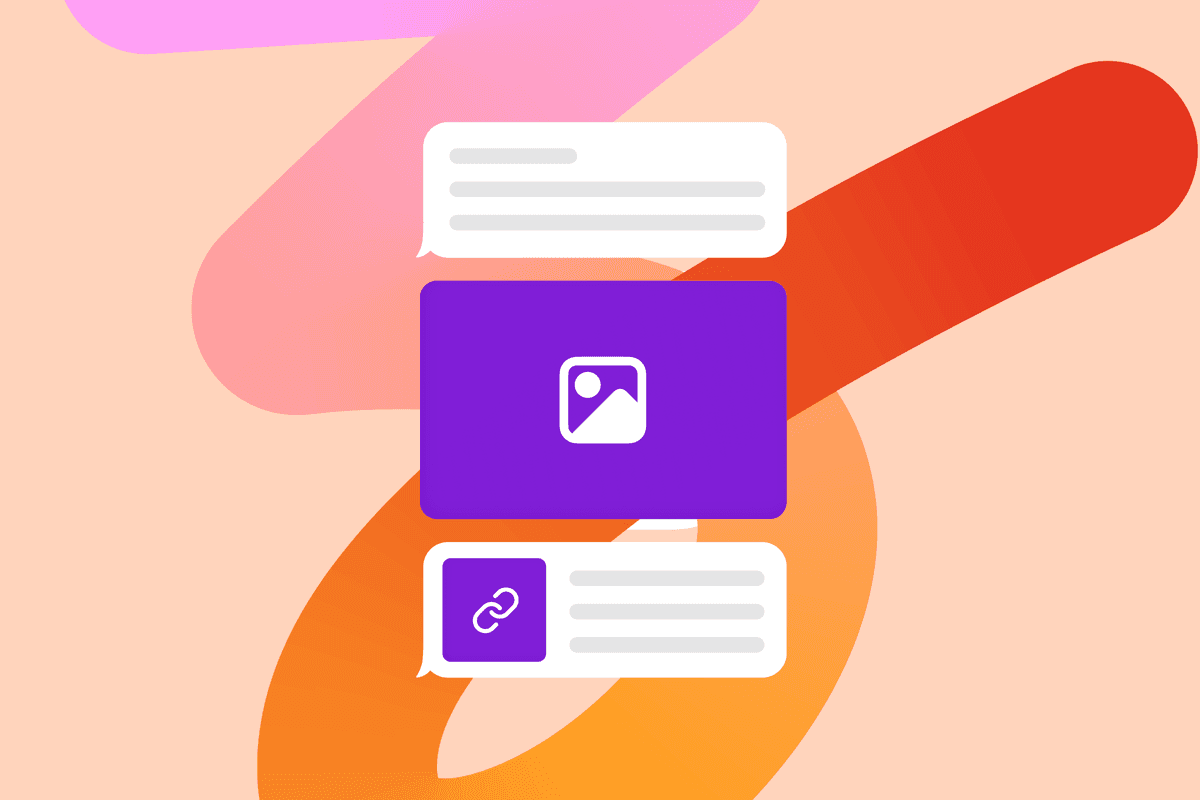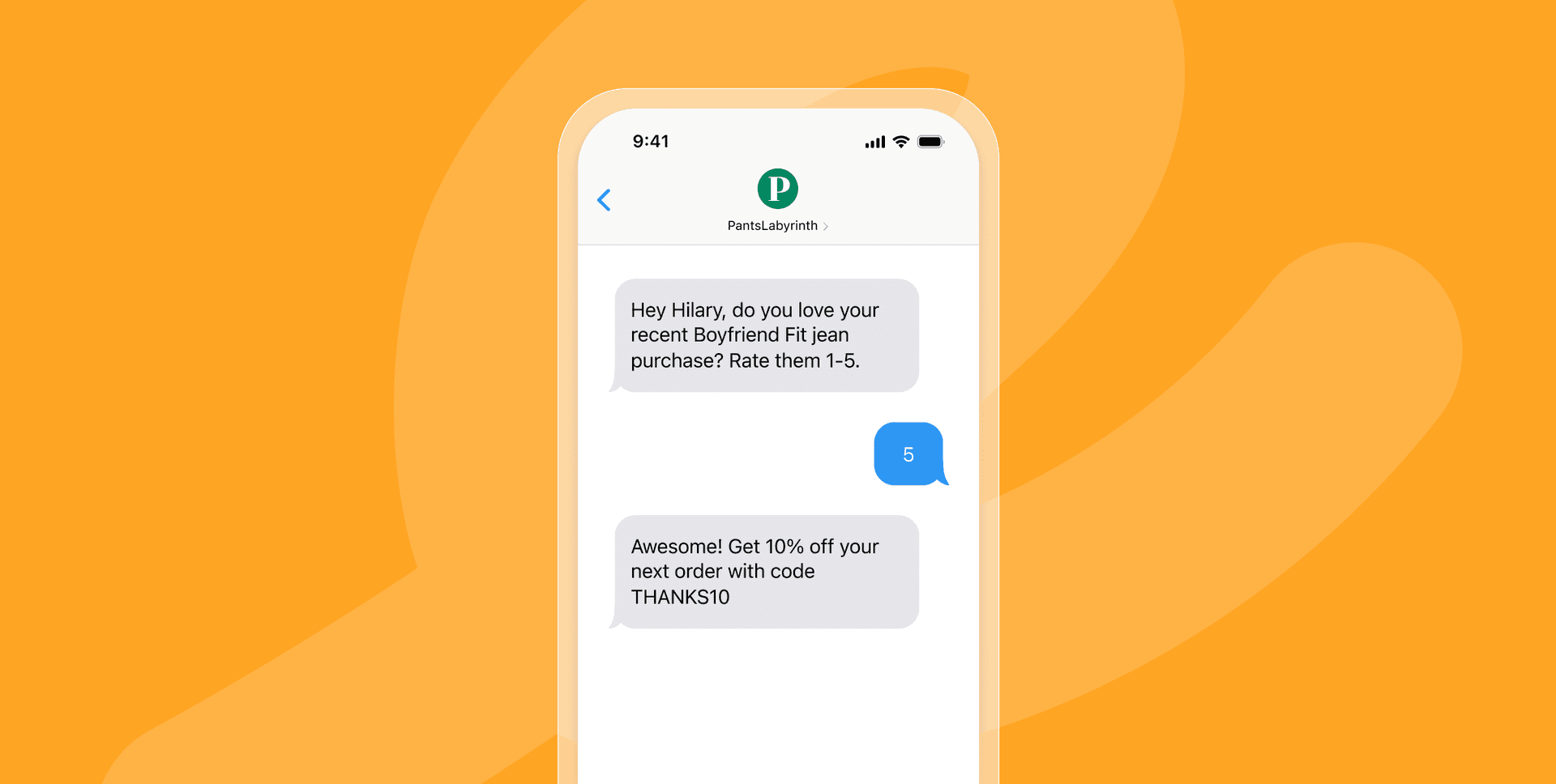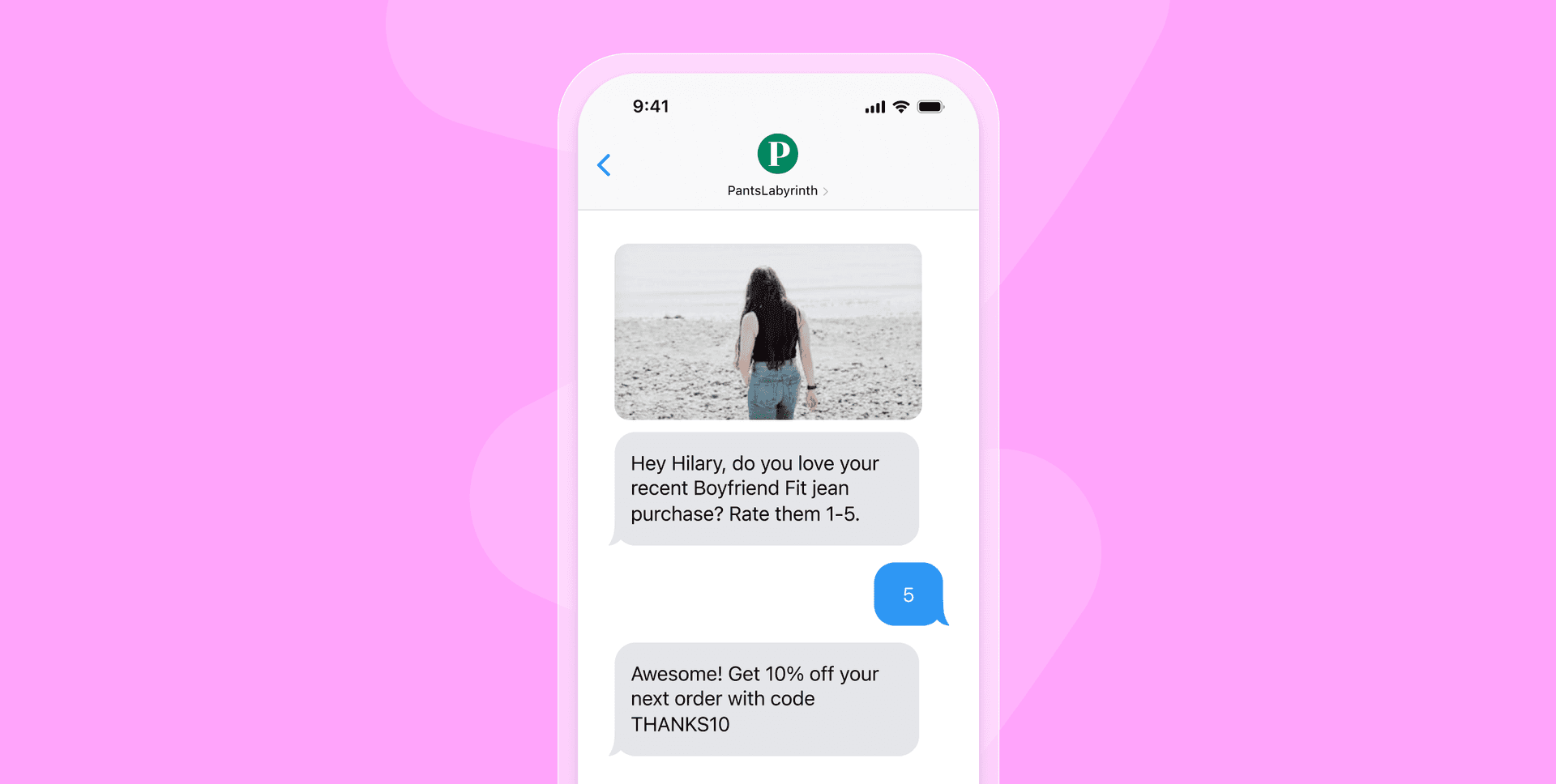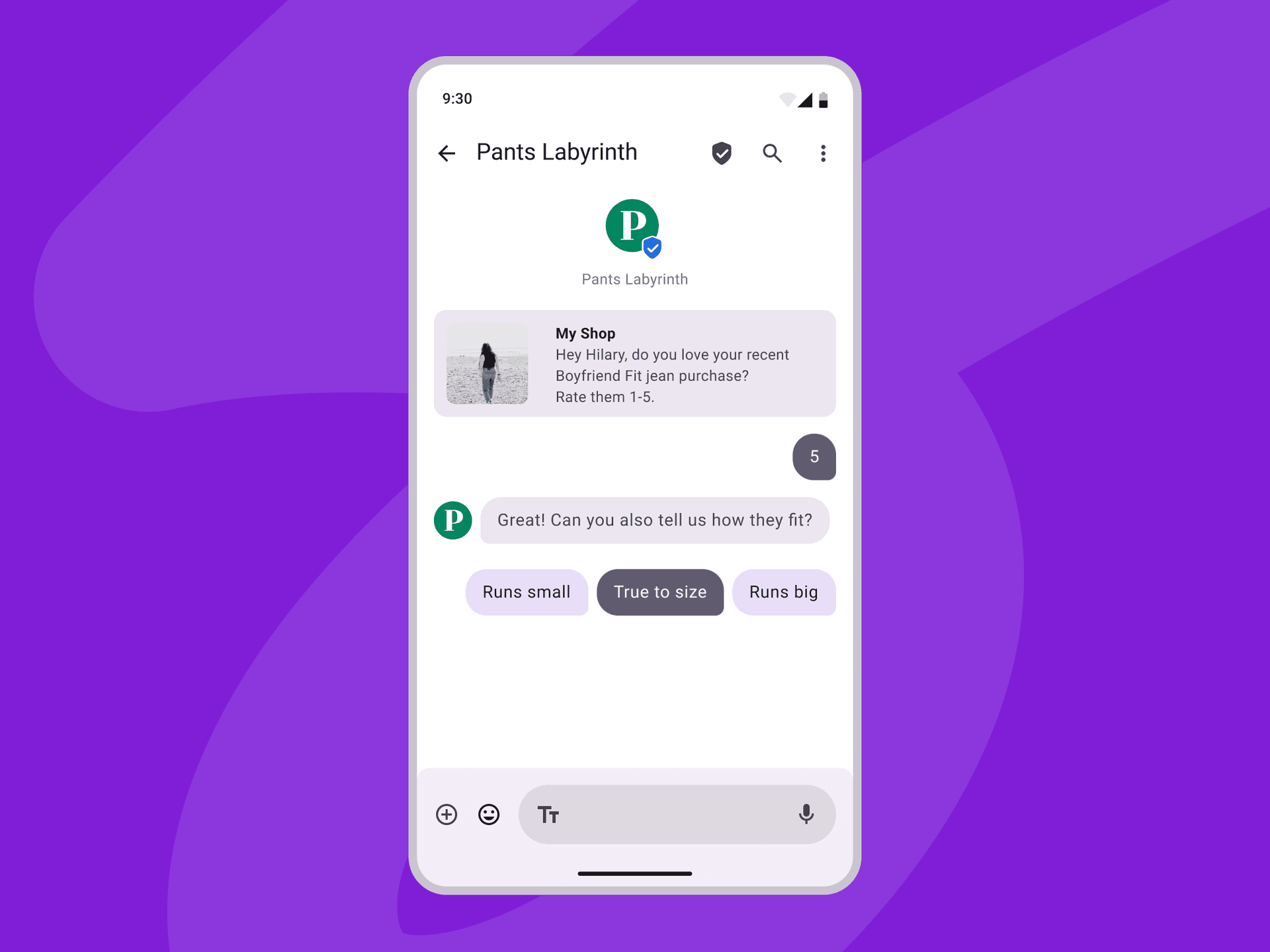Text Message Marketing and Beyond: What’s the Difference Between SMS, MMS, and RCS?
Published on December 16, 2021/Last edited on December 09, 2024/7 min read


Team Braze
Text message marketing and SMS marketing are often used interchangeably, but SMS (short message service) is just one of the text messaging channels in use for both peer-to-peer and marketing messaging today. In addition to SMS, MMS (multimedia messaging service) and RCS (rich communication service) are two other popular ways to text. So what is SMS marketing, anyway? And how about MMS messaging and RCS, for that matter? Let's dive into the key differences between each.
Three Different Text Message Marketing Channels: SMS vs. MMS vs. RCS
You may already have an understanding of the top channels within the broader umbrella of mobile marketing, like mobile push notifications, mobile web push notifications, in-app messaging, mobile email marketing, and messaging apps like WhatsApp. However, that’s only the tip of the iceberg. Here are some more channels you'll want to add to the list, all of which fall into the category of text message marketing.
You’re likely familiar with the first two, SMS and MMS. RCS is another text messaging channel you’re probably curious about, since it is garnering attention as the next big marketing channel. Here's an overview of each:
#1: SMS (Short Message Service)

Call them texts, text messages, or SMS—more than 2 trillion of these short messages are sent via mobile devices per year in the U.S. alone. These messages are often used by consumers for messaging with friends and family (also known as peer-to-peer messaging), but they’re also a key communication channel for brands to connect with their customers (also known as application-to-peer messaging).
What You Need to Know about SMS
- SMS is a widely popular messaging channel with high engagement rates—a 98% open rate and 90% of messages are read within three minutes.
- The vast majority of phones can send and receive SMS anywhere in the world. That reach distinguishes SMS both from other text messaging channels like MMS and RCS, which are not as broadly available, although RCS is growing in coverage now that Apple supports the channel on all iOS devices. SMS’s availability on all phones also distinguishes it from other mobile channels such as app push notifications and in-app messages, which require specific apps to be installed.
- SMS supports two-way interactions. Unlike email and push, which involve brands sending a message to their audience without a direct response mechanism for the consumer to communicate back to and interact with the brand, SMS allows brands to facilitate back-and-forth dialogue between brands and their customers.
- SMS does not support rich media, like images, GIFs, or videos. As their name implies, they support short (up to 160 character) plain text messages.
- SMS marketing campaigns are charged to brands based on the number of 160-character “message segments” sent, rather than the actual number ofSMS messages. While modern smartphones can support SMS messages that are longer than 160 characters, on non-smartphone devices you'll sometimes see longer messages literally split up (for instance, a 200 character message might get delivered as one 160 character SMS and a second 40 character one). While that is an edge case scenario and not a major concern for brands today, marketers should take note that longer messages containing multiple segments will cost them. For example, a 200 character message will be billed for two message segments, potentially leading to sticker shock for marketers less familiar with how SMS message segments work.
- SMS is a regulated marketing channel, with organizations like the FCC (with their Telephone Consumer Protection Act) and the CTIA overseeing the laws, rules, and regulations for SMS marketing. There are many SMS marketing compliance requirements brands must adhere to, including obtaining explicit opt-ins to start messaging customers via SMS.
#2: MMS (Multimedia Messaging Service)

In the past, when text messaging was in its early days, multimedia like GIFs, photos, and videos were delivered via MMS, also known as multimedia messaging services. Now, if you share a photo with a friend, it’s likely getting delivered via Apple’s iMessage or RCS (more on that later). But for brands looking to connect with consumers, MMS is a powerful look that livens up any SMS marketing campaign.
What You Need to Know About MMS
- MMS offers marketers the ability to send more engaging experiences than plain-text SMS messages. Sometimes your marketing campaigns need a highly visual, eye-catching touch, which MMS is built to deliver.
- Not all cell phone carriers support MMS. In these cases, your multimedia message will be sent as a regular SMS message with an image link that your customers can click to view.
- Although MMS is widely used in the US, not all countries and regions support MMS messages. Before you start building out your MMS strategy, take the time to assess whether each market you’re looking to reach can support this message type.
- Short codes, which offer high throughput sending, that have not already been enabled for MMS must go through a provisioning process, which can take as long as the process of applying for a short code (8 to 12 weeks).
- Certain SMS phone number types, including alphanumeric sender IDs and SMS-enabled toll-free phone numbers, are unable to send MMS texts. So make sure you choose your sending numbers carefully!
- Simar to SMS campaigns, even in regions where MMS is supported, there are prohibited content types that are strictly regulated by the carriers.
#3: RCS (Rich Communication Services)

Rich communication services (RCS) is a messaging protocol that was designed to be a new and improved version of SMS with enhanced capabilities. An SMS 2.0, so to speak. RCS was originally developed by the cell phone carriers (and made popular by Google) in an effort to compete with the likes of third-party messaging apps like WhatsApp, and even natively installed apps like iMessage, which offer consumers higher quality messaging experiences than SMS. As the name suggests, RCS supports rich media like high-resolution images, videos, GIFs, and even files. Android devices have supported RCS for years and since Apple started supporting RCS on all iOS devices in fall of 2024, the marketing industry is buzzing around the topic of RCS.
For brands, RCS’s growing popularity and steadily increasing carrier coverage means the potential to create richer, more interactive campaigns. For example, a restaurant or food delivery app could send a carousel with multiple images of menu items or a clothing brand could follow up after a purchase and ask the customer how the item fit using suggested responses.
What You Need to Know About RCS
- RCS is the next generation of SMS, offering a native messaging service with the rich features consumers have come to expect because of other popular messaging channels, like WhatsApp and Facebook Messenger. Think more robust message types, rich media, and the ability to facilitate interactive, two-way messaging with features like suggested actions.
- RCS is now widely adopted for peer-to-peer messaging between Android and iPhone users thanks to Apple’s update. RBM (RCS Business Messaging), however, is still an emerging channel for application-to-peer messaging because it requires carrier support to deliver marketing messages to consumers. Some countries, like the UK, Germany, and Spain, have high carrier coverage, while others are still catching up.
- As with SMS marketing, there will be regulations and laws that govern how brands can interact with consumers on this personal channel. So make sure to talk to your legal team before beginning to send messaging on this new communications channel.
- Even though RCS is an IP-based protocol, it still requires an application process that goes through Google and the carriers. Part of this process involves making sure the business is legitimate. This ultimately allows brands to deliver more trusted experiences through verified sending.
- To improve consumer trust and brand recognition, brands who complete the RCS verification process can deliver these experiences with branding such as their logo, brand name, and badge at the top of the RCS message thread.
- RCS unlocks reporting capabilities not available on older channels like SMS, including read metrics, which was historically a pain point for marketers looking to see how their text message marketing performed.
Next Steps
Considering adding text messages to your customer engagement mix? Reach out to the Braze team to learn more about SMS and RCS.
Related Tags
Be Absolutely Engaging.™
Sign up for regular updates from Braze.
Related Content
View the Blog
How behavioral marketing turns data into personalized experiences

Team Braze

Enterprise generative AI: Transforming data, decisions, and customer experiences

Team Braze

Omnichannel personalization: Delivering consistent, connected customer experiences
